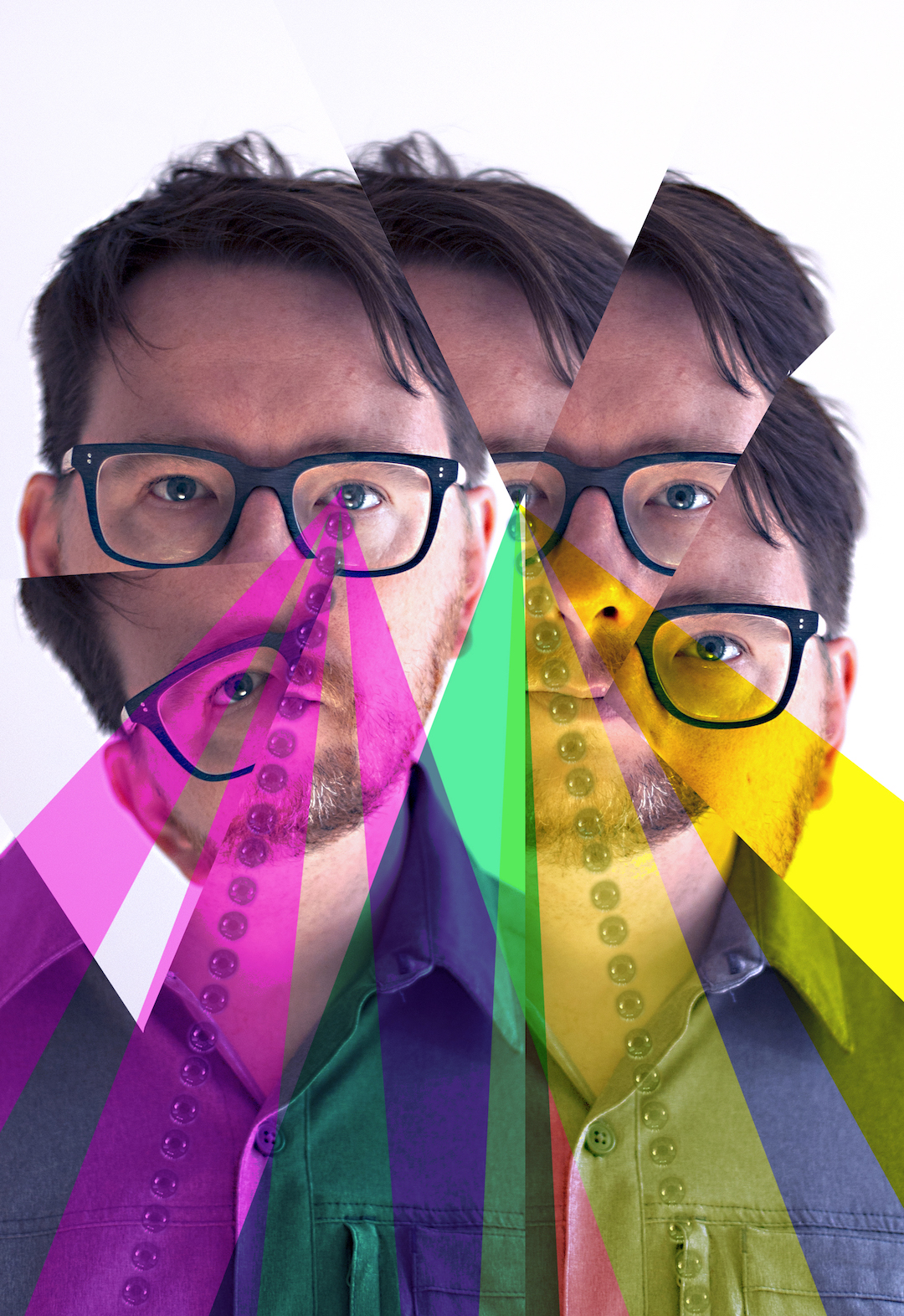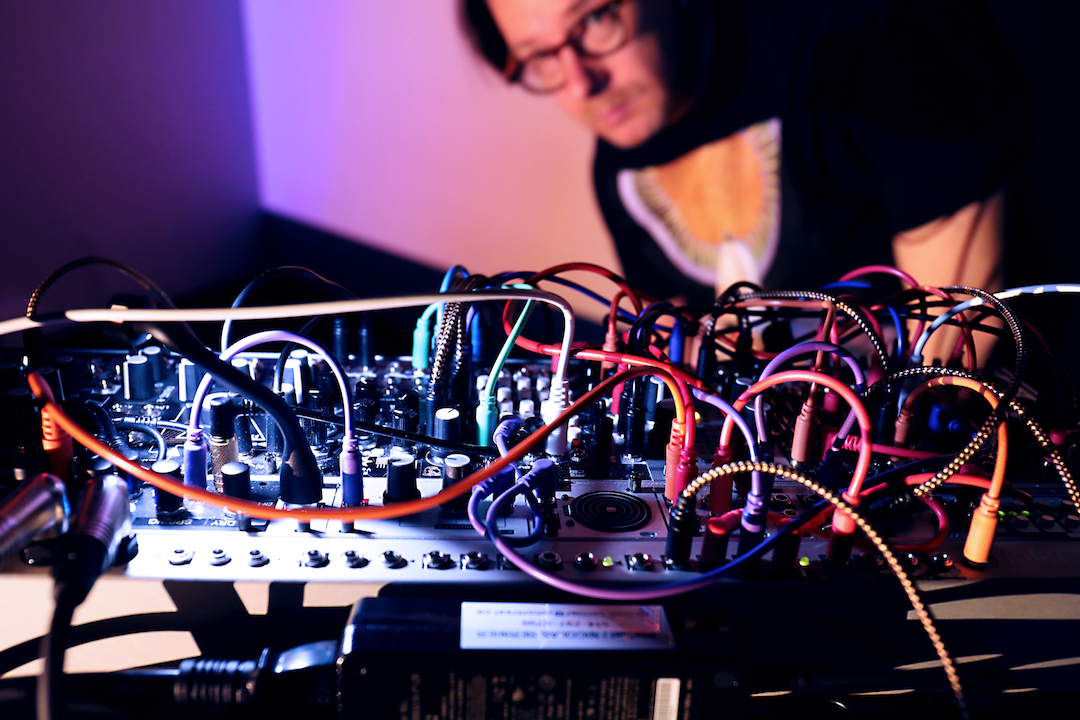

H.B. : Who are you / how do you define yourself?
N.B. : I would define myself as a curious person who enjoys surprises. But I can elaborate a bit if you wish.
Born in 1977, I experienced the 80s at their full potential. This seems to have led me into a somewhat turbulent relationship with popular music. This relationship has certainly marked my journey, which has since oscillated between baroque and formalism. The Madonnas and KLFs of the 80s made way for heavy music and punk rock in the 90s. It was probably during this time, when I organized concerts, produced tapes with no resources, and distributed photocopied flyers, that I unknowingly discovered graphic design. Too shy to study in a creative field, I attempted marketing studies, dreaming of using right-wing strategies to help the left. At the same time, the internet emerged. From photocopied flyers, my interest in graphic design moved to the digital realm as I started making websites for my music bands. Self-taught—since the web wasn’t taught at the time—I worked in this field for several years until the corporate nature of the industry took over, where it was initially a place for passionate individuals. As a webmaster/programmer/designer in the cultural field, music remained present, and I became more and more interested in electronic music, moving from club to drum’n’bass with jazz influences, to experimental post-rock.
Arriving early in the “job market,” I cherished the dream of studying music while also developing a passion for visual arts and performing arts. I managed to insert myself into the academic world—I’ll always be grateful to the professors who saw enough brilliance in my eyes to allow me to enter this field that was foreign to me. Living life at full speed, I quickly became involved in the so-called digital arts, experimental music, and electroacoustic music. Projects kept piling up: creation, collaborations, tours, designs for dance and theater, etc. In 2014, I felt that my experience could benefit others, and the stars aligned for me to begin a career as a professor at the Faculty of Music at the University of Montreal, where I’ve been doing my best ever since to help pass on the passion for artistic work.
This is obviously a very brief summary, a few key moments that contribute to defining who I am. Today, I feel that these experiences are coagulating in an interesting way in my work, and the piece “Aluminium” is certainly a recent example of that. It has a synthesizer base (80s influence), punk-style distortion (90s influence), a metric rhythm (90s/2000s influence) in an articulation certainly influenced by acousmatic and contemporary music (2000s/2010s)… all of it essentially PLAYED, as far as possible from the computer, that other object with which I’ve had a relationship just as turbulent as with popular music. These “turbulences” are probably what defines our work.
H.B. : How did this project come about / what path did you follow for its creation?
N.B. : This project exists thanks to the artist Mo H. Zareei, who works under the pseudonym mHz. The piece is available on his album Material Prosody, released in October 2024. Zareei initially designed a mechanical sequencer where a solenoid excites a material that can be changed: concrete, brass, copper, steel, wood… and aluminum. Zareei asked five artists (Alba Triana, Loscil, Matmos, Zimoun, and myself) to compose a piece using his sequencer, assigning a material to each artist.
As for the path I followed, I had to use my imagination to connect my current interests (mainly synthesis and gesture) with the material produced by the sequencer and its block of aluminum. This material is raw, if not harsh: the sequencer produces basic rhythms on an equally basic material. My creative strategy unfolded as follows: I attached a contact microphone to the aluminum block to generate a voltage that would trigger a synthesizer. The synthesizer I used is monophonic; it is a Mother-32 by the company Moog. The signal then passes through effect pedals. The piece was built through a very expressive and gestural play on this setup, all triggered by Mo H. Zareei’s Material Sequencer. In the end, the piece is an acousmatic work with minimal editing, rather a layering of three improvisations on the setup.
H.B. : What does the creation of an acousmatic piece represent for you today?
N.B. : Acousmatic music allows one to focus on sound, and only on sound. It is a noble, even purist stance (which I don’t see as pejorative). However, I must say that, as a music lover, I’m no longer interested in acousmatic concerts. I’m still interested in acousmatic listening at home, at a time of my choosing, with the setup that suits me. That said, the interest in creating the piece “Aluminium” was in the ACT OF MAKING. I feel that, by extension, the interest in listening to this piece is in hearing this ACT OF MAKING develop, in sensing the human play. This is also true for the majority of my acousmatic production.
H.B. : What are your next projects?
N.B. : Right now, I’m letting myself be carried by the proposals that come my way. Where for much of my life I rejected collaborations, too busy with my own ideas, I feel today, more than ever, a desire to try new things. A friend suggested I do a techno project: yes! (I’ve never made the audience dance, will I be able to?). A top-level classical musician proposed that we play together: yes! Another musician whose work I admire asked me to realize her next project: yes! I’ve just finished writing a synthesizer quartet. I’m also working a lot on the notation of electronic sound, the notation of performance. Without knowing exactly where I’m going with these eclectic projects, I believe I’m in a good position to continue “defining myself,” to borrow your first question.

